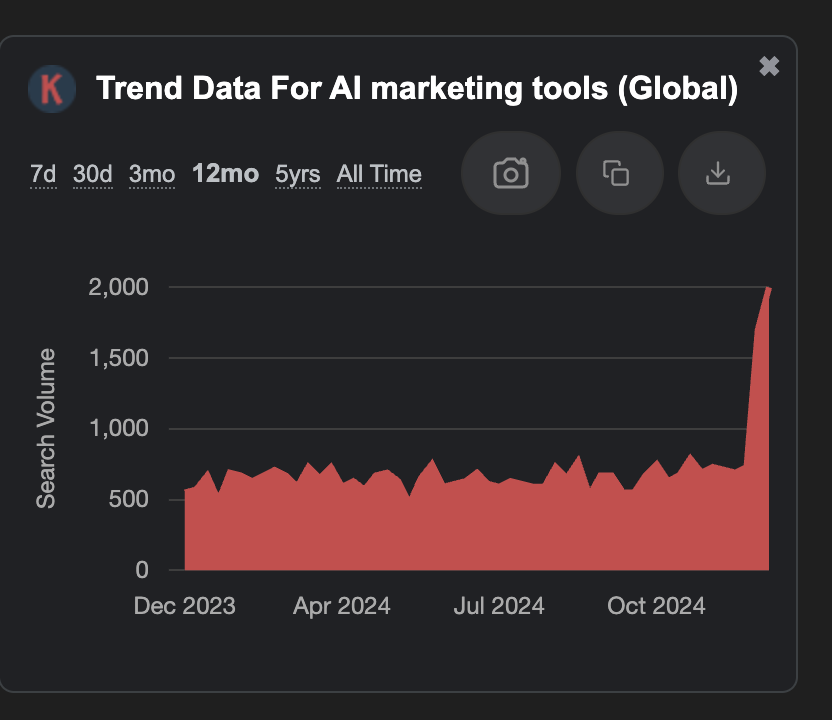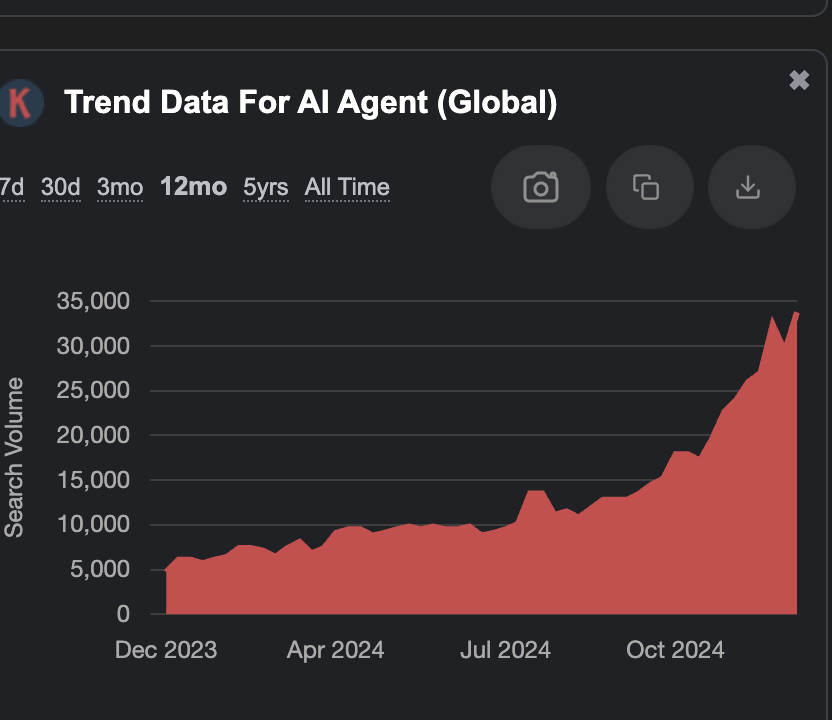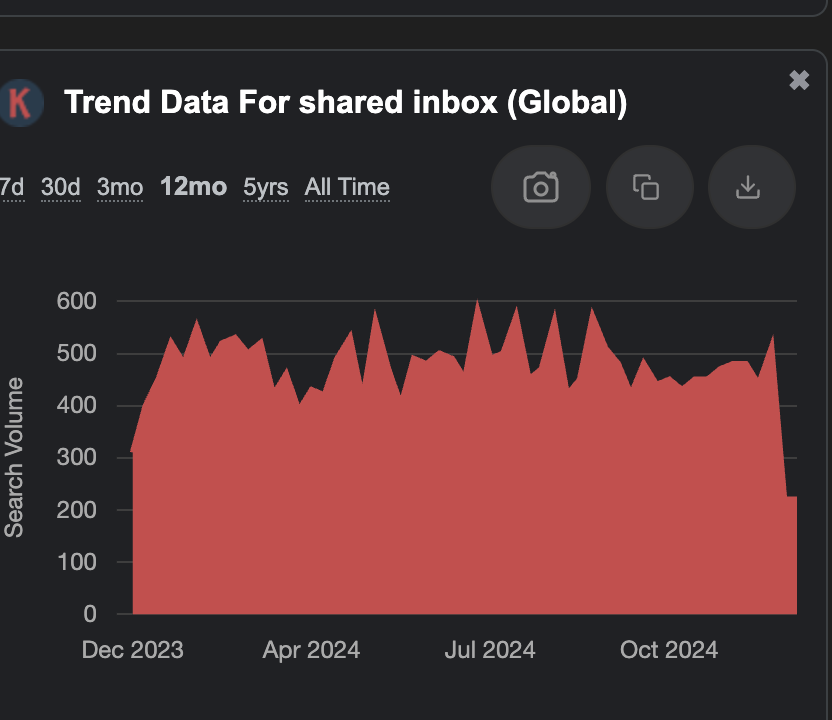Issue #133: Building $1K-$10K MRR Micro SaaS: Asset Management, AI-Powered Design of Marketing Graphics, AI Agent for Automated API Testing, Shared Inbox Tool & more- Part 2.
Build Profitable SaaS products!!
Hi fellow founders! Welcome to the 130 new subscribers who joined us this week. We are 35,000+ members now.
We are excited to share the latest Micro SaaS news and Micro SaaS Ideas to help you on your journey as a SaaS founder. Let's explore what's new this week!
👉 Get your Pro subscription today - Get access to hundreds of Micro SaaS Ideas, updates on Micro SaaS trends, and access to a closed community of founders, builders and makers.
🎉 ✨ Recent Micro SaaS News in 2 minutes
(This saves you hours of time and keeps you up to date on what's going on in Micro SaaS)
Agentix by Brunex made $750 MRR in 5 days. Agentix is a chatbot/agent builder for customer support, lead generation, user engagement etc. that can be integrated with Gmail, Calendly, Shopify, WhatsApp etc.
Nick hit $1K+ revenue and $200 MRR with Habit Rewards within a year of launch. It’s a habit-tracking app that uses gamification, rewards, and financial commitments to help users build and maintain positive habits
Jack’s two startups reached $7,000 MRR. These include Post bridge, a social media scheduling tool and Curiosity Quench, a tool that helps users take action on their hobbies with curated plans.
Feynman AI, by Alex, reached $10K in revenue after 3 months of launch. Feynman AI uses AI to turn recordings, podcasts, and PDFs into clear, organized notes. The app has 50K users with growth powered by TikTok videos, ASO, and SEO
ManyStories by Lincoln reached four paying customers and $100 in monthly revenue. ManyStories is a platform that gives writers a place to share all of their stories, regardless of where they publish.
Cliptalk Pro by Payam generated €10K+ revenue in 5 months. It’s an AI tool that lets users create YouTube Shorts, Instagram Reels and TikTok videos.
Jelly, co-founded by James, reached $480/month in revenue. Jelly is a tool for teams to share an email address.
Milan has grown Cora Intelligence to $1K/month revenue. Cora Intelligence is AI tool that allows users to enter an industry, customize data fields, and generate tailored leads.
Robopost by Mako has grown to $55K MRR in one year. Robopost, a social media post automation and scheduler. The MVP was built in 2 months and placing Meta Ads played a major role in this success.
Winter Arc, an iOS app to help users stay focused and accomplish their goals, was built in three days and reached ~$300 in MRR within the first month.
🤿🤿 Deep-dive &&💡💡Micro SaaS niches
⛳ 💡Micro SaaS for Asset Management
Managing physical and digital assets is a common challenge for small to medium-sized businesses and startups. These organizations often can’t afford enterprise-level asset management tools, which are expensive and overly complex for their needs. At the same time, manual methods like spreadsheets are inefficient, prone to errors and time-consuming. This creates a gap for a simple and affordable solution tailored to the needs of smaller teams and businesses. Build a micro SaaS that addresses this need by providing a simple platform that helps users efficiently track, organize, and manage their assets. Each asset would have its own page where users could store and access detailed information, including notes, purchase details and maintenance history. Users will reserve and check out assets directly through the platform, reducing double bookings or missed reservations. Include a calendar that provides a clear, color-coded view of asset availability, reservations, and overdue items. It will automatically notify users about upcoming maintenance, overdue returns, or warranty expirations. As an example see Shelf which is an asset management platform used by 3,000+ teams. Another successful player in this niche is Asset Panda with an annual revenue of $17.2 Million.
⛳ 💡Micro SaaS for AI-Powered Design of Marketing Graphics at Scale
Creating marketing graphics for campaigns becomes increasingly time-consuming when teams need to produce designs for different formats, platforms and audiences. Each platform not only has different dimension requirements but also unique best practices for engagement. At the same time, businesses may need to create multiple variations to cater to different audiences, such as localized ads for various regions. This involves producing dozens of design variations. For example, an e-commerce business running a seasonal sale might need individual graphics for ten product categories, across five platforms, in three regional languages. Build a solution that can automate these tasks while maintaining brand consistency. The platform would allow users to create reusable templates for common design needs, such as social media posts or banners, with dynamic fields for easy updates. AI-powered image generation would enable users to create visuals using natural language prompts. An API would automate the creation of graphics at scale by dynamically generating design variations based on data inputs like campaign details or audience-specific messages. Ideate is one such startup backed by Y Combinator enabling programmatically generation of on-brand designs with their API.
⛳ 💡AI Agent for Automated API Testing
Build an AI agent that automates the creation and execution of API-specific test suites eliminating the need for manual test case writing. Developers can input API specifications such as OpenAPI specs, Postman collections, or cURL commands, and the AI agent will use this information to generate detailed test cases tailored to the API’s endpoints, parameters, and expected behaviors. To enable automated testing of APIs during every stage of development, provide integration of API test suites with continuous integration and deployment (CI/CD) workflows. Include a dashboard that provides clear and detailed test results along with AI-analyzed feedback to help developers quickly identify and resolve potential issues. Kusho is one such player in this niche that has received a funding of $600K and is already used by 1300+ companies.
⛳ 💡 Micro SaaS for Shared Inbox Tool for Small Teams
A shared inbox tool is essential for teams managing emails from addresses like sales@ or info@ as it keeps things organized and prevents chaos. Build a simple shared inbox tool for small teams that pulls all these emails into one place, eliminating the need for team members to juggle multiple accounts and for smooth collaboration. Include a feature for collision detection that prevents multiple team members from replying to the same email simultaneously. When a team member starts drafting a reply, others could know that the email is being handled. The tool should let emails be easily assigned to specific team members. Add the ability to include private notes and comments directly within an email thread. This would enable internal discussions without cluttering customer-facing communication. Integrate with Slack/Teams for notifications about new emails, assignments, or internal notes to be sent directly to Slack channels, keeping everyone in the loop. For inspiration, see Loop with $7.5 Million annual revenue and Jelly that recently reached $480/month in revenue.
⛳ 💡Growth Hacking with Keyword Monitoring Tools
Keyword monitoring is a great way to find where and when users are talking about a related discussion/product/service and get notified to participate in the conversation. For example, if someone is discussing ‘growth hacking’ on Reddit, the keyword monitoring tools should be able to detect that and send an email so that users with ‘growth hacking’ tools can join the conversation and drive more sales. This is also a great way to get backlinks. Create a simple keyword monitoring Micro SaaS product that monitors most happening websites like Hackernews, Indiehackers, Lobsters, Reddit, Twitter. The SaaS tool should be able to notify the users via email. A good add-on would be to integrate the notification system with Slack, Telegram, etc. Most users would love to be notified on Slack or Telegram. Keyword monitoring solution gets more users only when the tools monitor more places. So, add as many platforms as you can monitor. For inspiration see Syften and PMAlerts that are profitable. You can also improve this by extending the search to the entire web instead of a few sites. Instead of just searching only in specific forums like Reddit, Quora, Hackernews, Lobsters - check for the mention across the web using Google search API. Most growing founders (with less than 50 customers) often search on Google and Youtube to see if anyone is writing about it. A simple service that can do this for founders launching new products will bring in some revenue. Then start doing user interviews. Then as an add-on, get the contact info of the website that mentioned the product. This could be someone writing a blog post about your product or someone creating a small video on Youtube about your product or someone mentioning your product in newsletters. Use Google search API to find out these things and then combine this information with the website contact/Youtube channel creator contact or newsletter contact so that the founder can find it easy to interact with people who wrote about their product. When you start, doing things manually will validate the idea and save you a ton of effort. “Doing things that don’t scale”
⛳ 💡Analytics tool for SaaS apps
Analytics for SaaS apps are special because they focus on specific metrics crucial for SaaS products. Unlike general analytics, SaaS analytics track user engagement, subscription churn, and feature usage, providing insights tailored to a subscription-based model. These analytics prioritize customer retention, conversion rates, and the overall user experience within the SaaS ecosystem. Specialized SaaS tools often integrate with popular platforms, simplifying data collection and analysis. They help businesses understand user behavior, optimize product features, and make informed decisions for continuous improvement. SaaS analytics are uniquely designed to address the distinct needs of subscription-based software services, ensuring efficient operation and sustained growth. It’s added advantage of the products supports analytics for both single and multi-tenant SaaS products. Vizzly, supported by Y-Combinator, is a popular product in this space, supporting both single and multi-tenant SaaS products. Logspot solving the same problem, also supported embedding these analytics right inside the SaaS products to improve user trust and engagement. TelemetryDeck helps app and web developers improve their product from live, accurate analytics data with 2000+ organizations are using TelemetryDeck.
⛳ 💡🔒 👉 [Get access to 1000+ additional ideas and more additional ideas in this niche and across all niches from Pro version with data points, revenue information]
💻 💻 Technical chops
Learn technical pointers on how to build products around this niche.
👉 🔒[Pro access]
📢 📢 Marketing chops
Learn Marketing pointers on how to start marketing the products for this niche. This should give you a marketing head start.
👉 🔒[Pro access]
💳 💳 Cost Analysis for 100 customers
Learn how much it costs to build a product in this niche and cater to 100 customers.
👉 🔒[Pro access]
Pro Version
See Technical chops for implementing for Micro-SaaS tools around current niche (Pro version)
See Marketing chops for implementing for Micro-SaaS tools around current niche (Pro version)
See Cost analysis for 100 users (Pro version)
Also get 100+ SaaS niches Pro versions covering 1000+ ideas from Pro news letters
Sponsor This Newsletter:
👉 Now you can sponsor this newsletter now and reach 33,000 people connected to Micro SaaS ecosystem. We have builders, founders, entrepreneurs, investors, marketers, no-code founders reading this newsletter that’s the best ecosystem for SaaS.
Want to sponsor this newsletter? 👉 👉 Check here
How did you find today’s issue? Let me know if you have any thoughts or questions. Just reply to this email – I read every message and use your input to make these emails better for you. Happy to connect with you on X and LinkedIn,
Cheers, Upen









